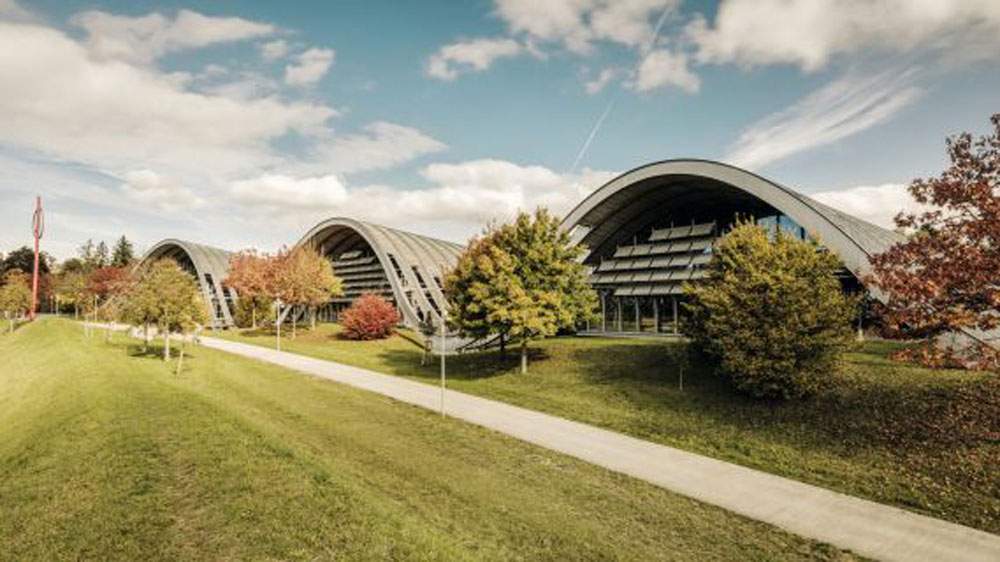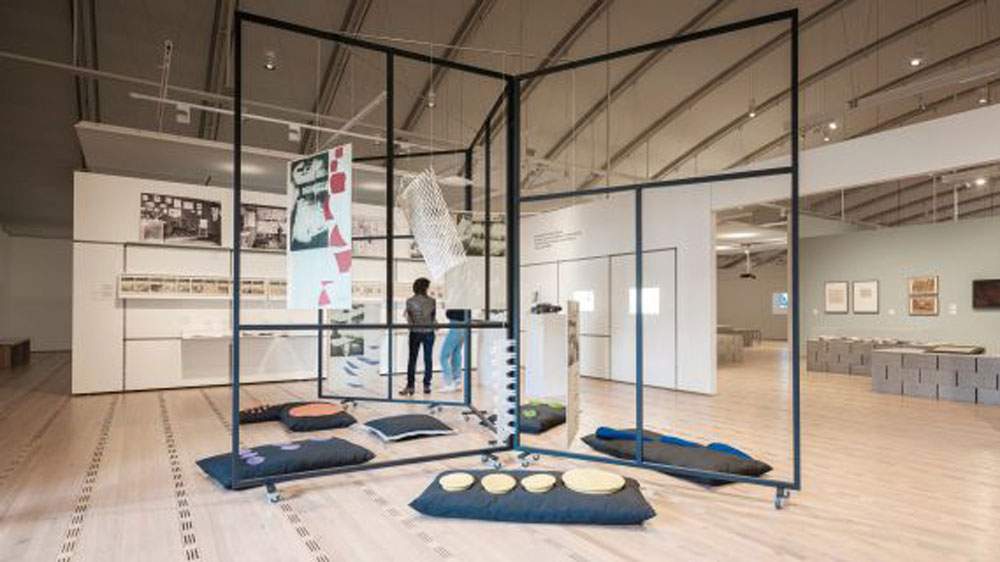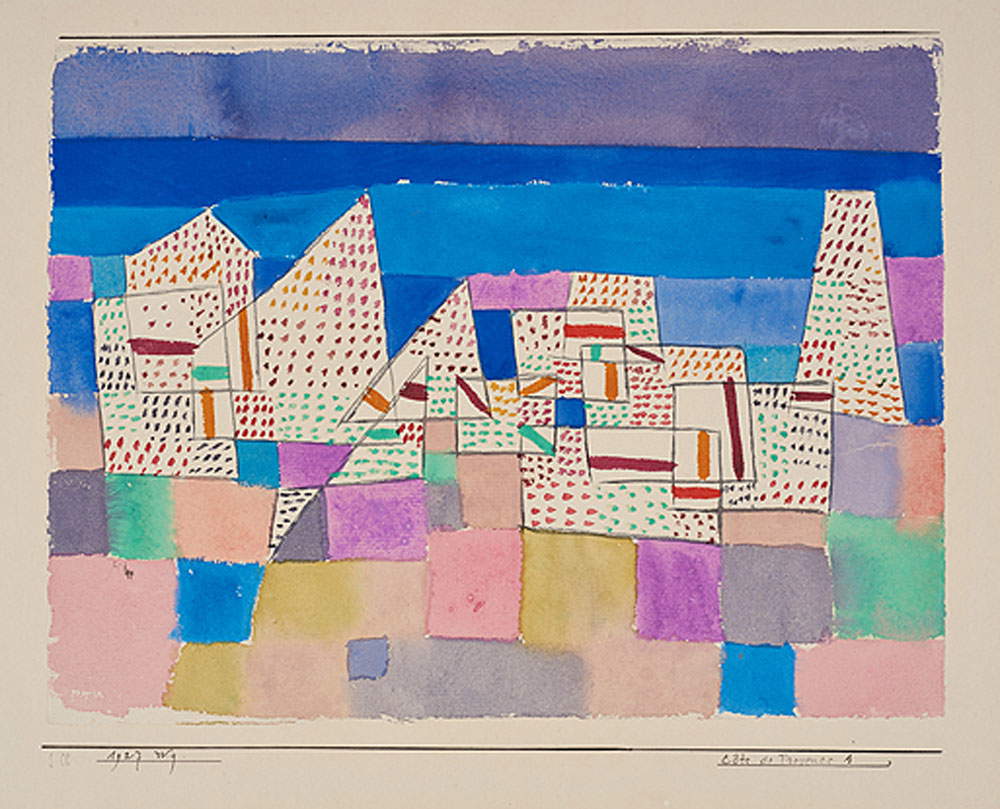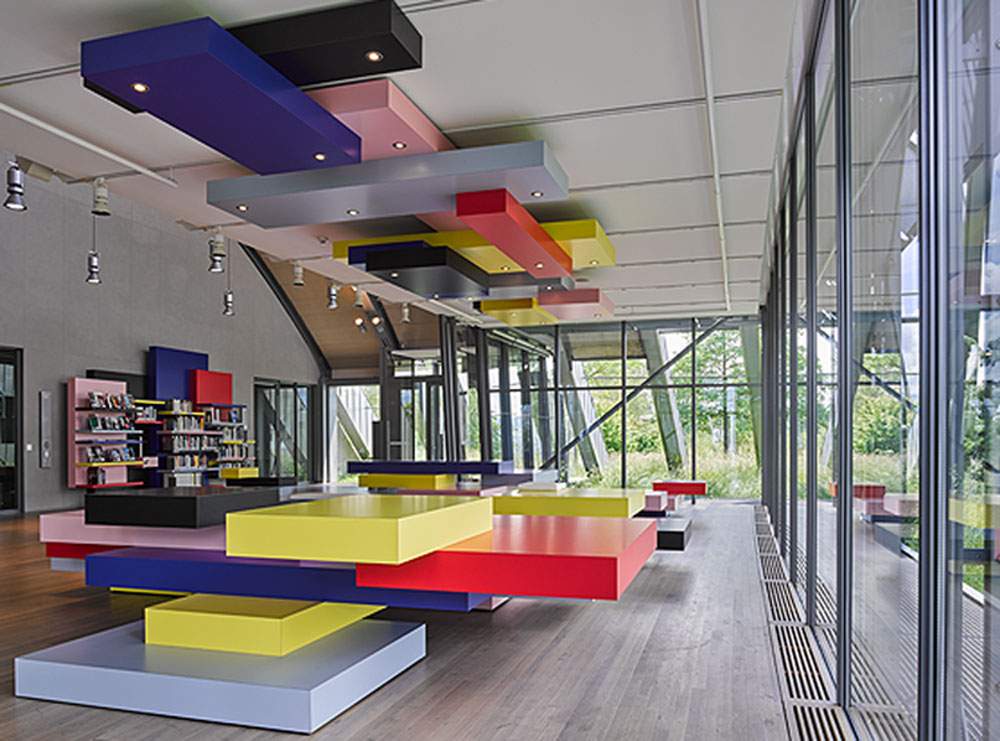The Swiss capital, Bern, is home to the world’s largest collection of works by one of the most famous artists active at the turn of the 19th and 20th centuries, Paul Klee (Münchenbuchsee, 1879 - Muralto, 1940). Four thousand works including paintings, watercolors and drawings, as well as biographical evidence, because the artist spent half of his existence in Bern, have indeed found their permanent home in the Zentrum Paul Klee: a museum that seems to consist of three hills in the middle of a green island. Its architecture, designed by Renzo Piano, consists of three glass and steel structures, inside which are, in addition to the exhibition halls, a hall for concerts and events, a children’s museum, plenary rooms and rooms intended for seminars. The architectural “hills” of the museum blend in and blend well with its surroundings, as Zentrum Paul Klee is nestled in an agricultural area, called Fruchtland, named after a work by the artist himself, Monument im Fruchtland, and is also the address of the museum complex. A kind of bridge between art and agriculture according to a sustainable, responsible and holistic worldview. Visitors have the opportunity to taste and buy agricultural products in the museum’s restaurant or shop.
When Renzo Piano thought about the project to be built, the assumption flashed through his mind that Paul Klee was a wide-ranging and far-reaching artist, unsuitable to be enclosed in an ordinary building. In addition, the architect was inspired by the identity of the place and the gentle oscillations of the terrain. He was fascinated by the hills: in fact, he started from here in conceiving his design. The three hills are the articulation of the landscape, merging with the terrain and transforming it into a landscape sculpture; they are large in size: the central wave reaches twelve meters in height, but one does not realize this size at first glance because the shape mitigates the size.
Another basic idea was also to make the museum not a place of silence, but a place of encounters, rest and pleasure, presenting Klee’s multifacetedness as a painter, musician, teacher, writer and philosopher. Each hill is devoted to a particular aspect: the northern hill is devoted to the practical mediation of art, music, lectures and workshops; the central hill is devoted to the permanent collection and temporary exhibitions; and the southern hill is devoted to research and administration. The façade possesses an unusual geometry: made of glass, it reaches a total length of 150 meters and is divided into an upper and a lower part, which are slightly staggered and interconnected on a height of four meters above the ground floor of the eaves, and at the highest points the façade reaches a height of 19 meters.
Despite this, because of its vastness and diversity, the collection of Paul Klee’s works cannot be fully exhibited, and furthermore, their fragility does not allow for a permanent classical exhibition. For this reason, the museum exhibits the collection on a rotating basis, that is, temporary selections of 120 to 150 works are made at a time according to different themes. Two exhibition spaces then provide settings for continually renewed studies of the artist’s work and for the presentation of events related to the plastic arts.
 |
| The three hills of the Zentrum Paul Klee |
 |
| Interior of the Zentrum Paul Klee |
 |
| Interior of the Zentrum Paul Klee |
The Zentrum Paul Klee was inaugurated on June 20, 2005 to dedicate a new cultural institution entirely to the man, life and work of Paul Klee. In that year, the Paul Klee Foundation, established since 1947, was integrated into the Zentrum Paul Klee Foundation. Until then, Paul Klee’s center of scholarly expertise had been the Paul Klee Foundation, of which Felix Klee, the only son of Paul and Lily Klee, was president, who donated part of his photographic archives and works from his library about his father; Alexander Klee, the artist’s grandson, later supplemented these donations with significant written documents from Paul and Lily Klee’s legacy. It was, however, with Felix’s death and donations from Livia Klee-Meyer (Felix’s wife) and the Müller family of collectors (orthopedic surgeon Maurice E. Müller and his wife Martha Müller-Lüthi) that the idea of a fully dedicated museum began to materialize. Donations from the Müller family were and still are subject to three main conditions: the Paul Klee Zentrum was to be located in Schöngrün, in the area that is also home to the cemetery where Paul Klee rests; the design of the new center was to be entrusted to Renzo Piano, an internationally renowned architect and friend of the Müller family; and the works of Paul Klee and his artist friends owned by public authorities were not to be housed in a traditional museum but in a cultural center for visitors of all ages. In fact, there is also a children’s museum, which offers young children the chance to learn about the artist’s original works, their themes and different techniques, and then give space for their creativity through workshops. The story of the birth of the Zentrum Paul Klee is thus a concrete example of public-private partnership: an excellent collaboration between public and private authorities.
Among the core principles of Zentrum Paul Klee are the scientific study of Paul Klee’s artistic, pedagogical and theoretical work and the investigation of its significance in the cultural and social context of his time. It also aims to transpose his artistic potential into the present, to value his artistic legacy through contemporary issues, new scientific interpretations and innovative forms of mediation. Visitors have the opportunity to make stimulating experiences and discoveries that will lead them to reflect on Paul Klee’s work and personality, artistic expression, and his life culture.
Through its activities, the Zentrum Paul Klee aims to establish itself as a comprehensive center of competence for research and dissemination of the work and art of Paul Klee, his critical fortune, and other significant cultural themes: this is achieved through the use of modern research resources and the development of exhibition and mediation offerings suited to the needs of visitors of all ages and with different interests and life contexts.
The entire museum complex then aims to foster encounters with art and art enthusiasts and encourage not only children but also adults to develop their creativity through creative and interactive activities. Without forgetting that there is a strong connection between nature and culture here.
As stated earlier, the permanent collection is not displayed in its entirety, but on a rotation of 120 to 150 works. The regular rotation of works responds to logistical and conceptual reasons: on the one hand, the 1,750 square meters of exhibition space in the two halls of Zentrum Paul Klee are not sufficient for the enormous collection; on the other hand, the rotation makes it possible to give the artist a constantly renewed image, revealing new aspects of the painter’s work. The opportunity is thus offered for the public to discover works that are still little known. Klee’s works are also very very sensitive to light, as the artist used delicate inks and papers, which left for too long in the light would lose their luster or become more fragile. The exhibited paintings are therefore put to rest every six months in storage.
 |
| Paul Klee, Côte de Provence 1 (1927; watercolor, 23.2 x 30.6 cm; Bern, Zentrum Paul Klee) |
 |
| Portrait of Annemarie Schwarzenbach with camera (1939) Ph.Credit Esther Gambaro |
 |
| Lang/Baumann, Module No. 4 (2016; laminated wood, 9 x 2.8 x 3.5 m, 5 x 0.9 x 3.2 m; Bern, Zentrum Paul Klee) |
In addition to four thousand works, including paintings, watercolors, and drawings, Zentrum Paul Klee has a large collection of original documents and important scholarly records, available to specialists and enthusiasts. Included in the archives are original biographical documents, such as his diaries, the manuscript catalog of his work and the pedagogical legacy with notes from his teaching at the Bauhaus (about 3,000 pages), but also Lily Klee’s, much of his correspondence with family, friends and acquaintances, art dealers and museums, personal documents, biographical photos and objects from his studio such as paintings, the painter’s tools and other utensils.
The library collects all the works ever published on Paul Klee, from his beginnings to the most recent publications and monographs; all catalogs of exhibitions in which Klee participated; press articles and reviews of some 600 individual and group exhibitions held during his lifetime; and reviews of exhibitions and publications published to date. A database also collects all of Paul Klee’s works and documents, which are useful for specific research, and is continuously being updated.
There are also documents that chronicle other aspects of Klee’s life and activities, such as those related to music andteaching: the music archives bring together works by composers from the 1930s, including compositions that relate to Klee, as scores or sound carriers of nearly 260 composers, including Boulez, Globokar, Penderecki, Poulenc, and Tan Dun. There is even a database of his students, with letters and photos, notes taken during Klee’s classes at the Bauhaus and the Düsseldorf Academy of Fine Arts. In the Multimedia Archives there are television, film and radio productions about the artist and his context. Finally, the Legacy Archives testify to his legacy and the influence of his art after his death, including advertising and design products, literary works, videos, and photos published on the web. A record of artists inspired by Klee is in development.
From the museum’s website, the online collection and temporary exhibitions can be accessed digitally.
Through April 25, 2021, the Zentrum Paul Klee offers Mapping Klee, an exhibition that traces the artist’s artistic activity from the various stages of his existence and travels. It highlights the places where Klee lived, worked or sought inspiration: from Bern to his return via Munich, Weimar, Dessau and Düsseldorf, through works, photos, film excerpts and documents. Also, his formative trips to the Mediterranean, the North Sea, Tunisia, Egypt, Paris, and Berlin. A section of the exhibition is devoted to the “travels” of the artist’s works after his death, the most famous collections of his works, and the stories of paintings that disappeared during the war.
Also offered until May 9, 2021 is the first exhibition in Switzerland dedicated to Annemarie Schwarzenbach, a 20th century photographer, writer, journalist and traveler. Departure without destination, this is the title of the exhibition, brings together some 7,000 photographs taken during her extensive travels across continents. Considered primarily a writer, she was also a pioneer of reportage photography. However, most of her photographs have remained unpublished, and her work as a photographer is still little known. Her travels took her to the Middle East and Central Asia, the United States, Europe, Central Africa and North Africa between 1933 and 1942. Belonging to the upper middle class and the wife of a diplomat, Schwarzenbach enjoyed great freedom until the beginning of World War II. Her snapshots and writings document the violent upheavals, tensions and conflicts of the time before World War II, such as the repercussions of the 1929 economic crisis, hopes for social progress, the consequences of modernization and industrialization, the threat of fascism and fascination with the East. More personal themes are also reflected, such as uprooting, life in exile, homosexuality or breaking with traditional gender roles. These photos particularly reveal an unbridled passion for travel itself and the unknown: going without a destination as an existential experience.
Finally, it is a permanent installation Module No. 4 by Lang / Baumann: it is a fragmented structure composed of blocks of different sizes and various colors staggered on top of each other; a second group of similar appearance hangs from the ceiling. The ensemble, which can be seen in the southern part of the museum in a glass room, forms a colorful space with a strong impact.
At Zentrum Paul Klee, visitors of all ages not only have the opportunity to learn in detail about the life and art of the celebrated painter, but they can experience and experience a living museum that induces creativity in an environment in close relationship with the surrounding landscape.
 |
| Zentrum Paul Klee, the world's largest collection of the artist in Renzo Piano's Three Hills |
Warning: the translation into English of the original Italian article was created using automatic tools. We undertake to review all articles, but we do not guarantee the total absence of inaccuracies in the translation due to the program. You can find the original by clicking on the ITA button. If you find any mistake,please contact us.